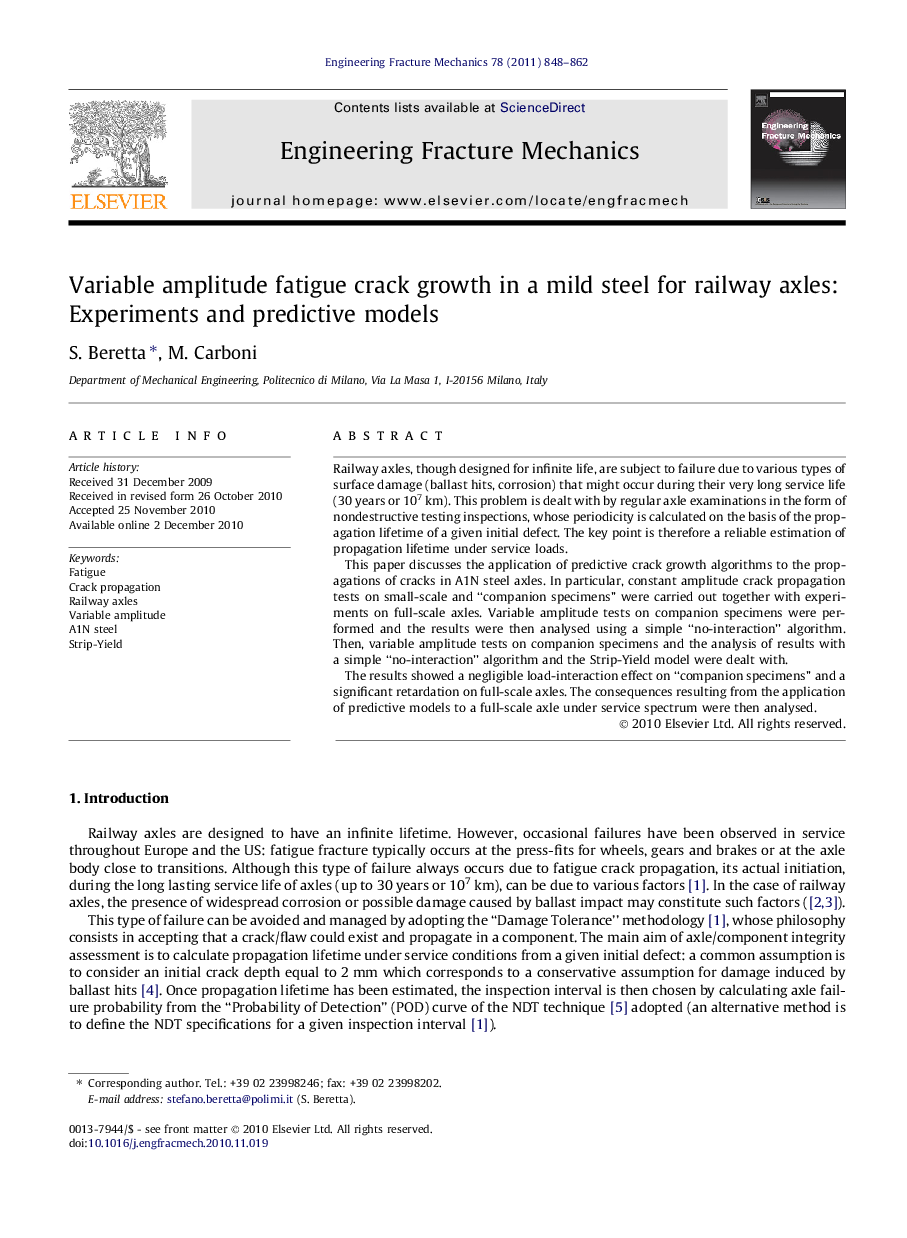| Article ID | Journal | Published Year | Pages | File Type |
|---|---|---|---|---|
| 767784 | Engineering Fracture Mechanics | 2011 | 15 Pages |
Railway axles, though designed for infinite life, are subject to failure due to various types of surface damage (ballast hits, corrosion) that might occur during their very long service life (30 years or 107 km). This problem is dealt with by regular axle examinations in the form of nondestructive testing inspections, whose periodicity is calculated on the basis of the propagation lifetime of a given initial defect. The key point is therefore a reliable estimation of propagation lifetime under service loads.This paper discusses the application of predictive crack growth algorithms to the propagations of cracks in A1N steel axles. In particular, constant amplitude crack propagation tests on small-scale and “companion specimens” were carried out together with experiments on full-scale axles. Variable amplitude tests on companion specimens were performed and the results were then analysed using a simple “no-interaction” algorithm. Then, variable amplitude tests on companion specimens and the analysis of results with a simple “no-interaction” algorithm and the Strip-Yield model were dealt with.The results showed a negligible load-interaction effect on “companion specimens” and a significant retardation on full-scale axles. The consequences resulting from the application of predictive models to a full-scale axle under service spectrum were then analysed.
